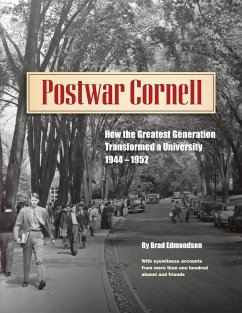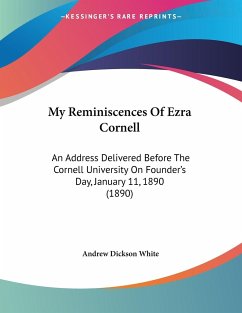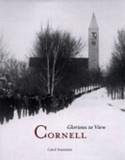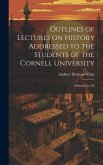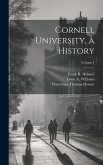Cornell University has 21,600 students in 2015, about twice as many as it did in 1950. Half of them are women, compared with one-fifth back then. And more than one-third of today's Cornellians are black, Hispanic, or Asian. In 1950, all of the university's minority students probably could have fit into a single lecture hall. Cornell is also a lot richer now. In the late 1940s, it was struggling to balance the budget and recovering from a severe case of growing pains. Enrollment increased 40 percent between June and October 1946. Many freshmen lived in poorly insulated temporary dorms, ate in shifts, and attended classes in Quonset huts. Postwar Cornell brings that vanishing world back to life, in the words of the people who lived through it. The book is made from the voices of over 100 Cornell alumni and friends, who describe how the University was transformed during and just after World War II. Other differences are just as striking. In 1946, 64 percent of Cornell undergrads were veterans of World War II, attending on federal scholarships that paid most of their tuition and expenses. Today, veterans are less than one half of one percent of the student body. Cornell today offers "gender-inclusive housing," but in 1950, it locked women into their dorms at night. Co-eds who violated the curfew faced disciplinary measures that escalated all the way to expulsion. Yet some of the same books that were taught in 1950 are still taught today. Students still work too hard. They still fall in and out of love. Some of them still party too much, although student alcohol consumption today is probably much lower than it was then. In 1950, any 18-year-old could go into the student union and get a beer. The biggest similarity might be one in attitude. Back in the late 1940s, some Cornell students were intently focused on addressing social problems that threatened to bring on planetary catastrophes. Students do that today, too. But in the 1940s, those kinds of worries were new. The students of Postwar Cornell have a unique story to tell. They were the junior members of a campus community that went through years of unprecedented change. They helped to create the standards of higher education we take for granted today. Shortly after the United States entered World War II in 1941, the military suddenly occupied Cornell and other campuses across the country. In just a few months, academic buildings became training facilities for soldiers, sailors, and aviators. As the war was ending, President Franklin Roosevelt asked Congress to fund a massive expansion of university research and scholarships. Postwar Cornellians were the first to benefit from a big new idea: that people who deserve higher education should be granted it, with substantial public support. In 1944, Title II of the GI Bill paid most of the tuition, fees, room, and board expenses for any veteran who had not received a dishonorable discharge. The bill was a spectacular success, educating fourteen future Nobel Prize winners, three Supreme Court justices, three US Presidents, a dozen senators, two dozen Pulitzer Prize winners, and countless teachers, scientists, doctors, engineers, lawyers, business leaders, artists, and others. Postwar Cornellians went on to change the world. Most of this book is excerpted from oral history interviews. The book also includes contemporary articles, letters, and diary entries, and is richly illustrated with photographs and memorabilia. Its goal is to give readers a vivid portrait of Cornell from 1944 to 1952, drawn from eyewitness reports.
Hinweis: Dieser Artikel kann nur an eine deutsche Lieferadresse ausgeliefert werden.
Hinweis: Dieser Artikel kann nur an eine deutsche Lieferadresse ausgeliefert werden.

